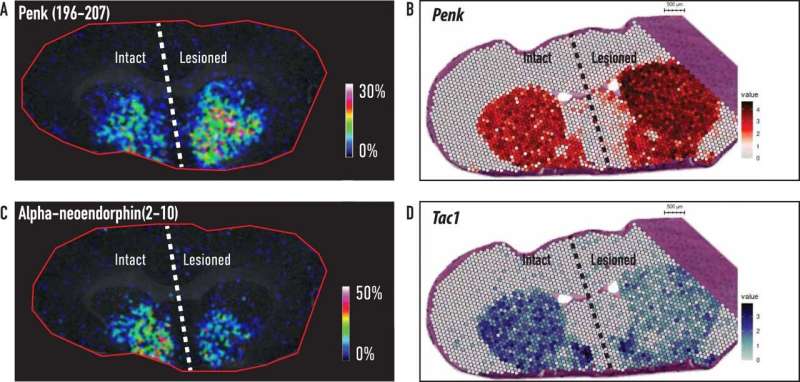This article has been reviewed according to Science X's editorial process and policies. Editors have highlighted the following attributes while ensuring the content's credibility:
fact-checked
peer-reviewed publication
proofread
Researchers create new spatial omics method

Researchers at Uppsala University, Stockholm University and KTH Royal Institute of Technology have managed to create a new spatial omics method. By combining two complex techniques that are usually used separately—mass spectrometry imaging (MSI) and spatially resolved transcriptomics (SRT)—they have taken an important step in research on biological tissues. The study is published in the journal Nature Biotechnology.
"Our method can visualize both low-molecular metabolites, such as signaling molecules in the brain, and RNA transcripts—in the same biological tissue section—without compromising on the quality or precision of results. The findings of this study have the potential to significantly advance the field of spatial biology and pathological research," says Per Andrén, Professor of Mass Spectrometry Imaging at Uppsala University and SciLifeLab and one of the authors of the study.
The method, successfully demonstrated using tissue sections from both mice and human brains, targeted signaling molecules and their role in Parkinson's disease. By analyzing the complex molecular profiles in a single tissue section, researchers can obtain a deeper understanding of Parkinson's disease and other complex illnesses.
One important aspect of the method is its capability to visualize molecules and their distribution in the tissue while simultaneously analyzing gene activity. This methodology enables researchers to explore the connection between gene expression and molecular activity at a higher level.
"The method is applicable beyond neurobiology and could potentially change the landscape in various areas of biological and medical research, for example, oncological research. By studying tumor environments and treatment responses at the molecular level, the method can be a gateway to understanding complex diseases and optimizing therapeutic strategies," Andrén says.
More information: Marco Vicari et al, Spatial multimodal analysis of transcriptomes and metabolomes in tissues, Nature Biotechnology (2023). DOI: 10.1038/s41587-023-01937-y
Journal information: Nature Biotechnology
Provided by The Swedish Research Council




















